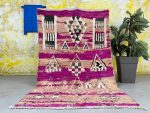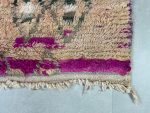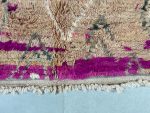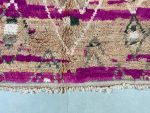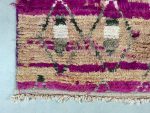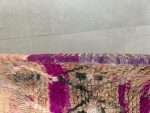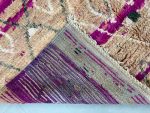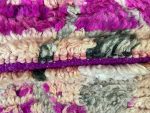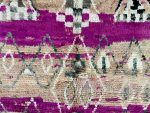The meaning of each Boujad rug represents femininity and family tribal history. The intricate design represents ancestral myths and playful narratives. Much of this arose from the lack of a written language. Ancient Berber weavers found creative ways to incorporate their expressions and visually record their emotions and experiences.
Each rug is handmade by artisans who collect soft sheep’s wool obtained from the region where they reside. They then clean the wool in the river and leave it under the stars for a night to ward off the evil eye. The wool is dyed in vibrant colors using flowers and vegetation from the region.
Boujad rugs are like abstract paintings that add a rustic bohemian charm and an ethnic touch to the interior decor of a home. These masterpieces are investment pieces that increase in value over time. Each Boujad rug is unique, and you won’t find two exactly the same.
Here are some tips for caring for your rug:
Vacuum your rug gently and in the same direction as the weave to avoid damage. Occasionally, you can hang it outdoors in the sun to refresh it and remove loose dirt.
For stains and accidents, you can clean it with a white towel dampened with cold water and a bit of carpet detergent, making sure the rug doesn’t get wet or soaked.
For a deep clean, we recommend leaving it in the hands of a professional.
How to choose the size of your rug:
Living Room: Leave at least 2 legs of the couch on the rug. Consider a 20 to 60cm gap between the rug and the wall, so it doesn’t look like wall-to-wall carpeting.
Bedroom: The rug should extend beyond the sides of the bed, at least 30 cm. When you get up, you should feel the rug under your feet. Standard sizes are:
Twin/Single: 1.05 x 2 meters
Full/Double: 1.5 x 2 meters
Queen: 1.8 x 2 meters
King: 2 x 2 meters
Dining Room: The rug should be larger than the table, at least 1 meter larger on each side so that the chairs always sit on it.



 Wool poufs
Wool poufs Vegan poufs
Vegan poufs




















